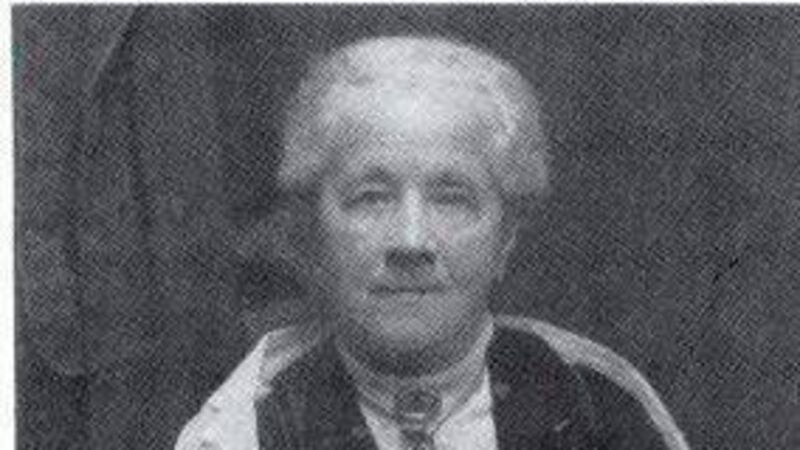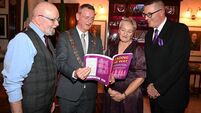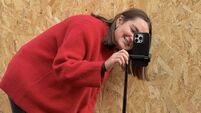Cork woman Anna Haslam was a 'giant of the women’s cause'

Anna Haslam (1829-1922).
DESCRIBED by her colleagues as ‘one of the giants of the women’s cause’, Anna Haslam took part in virtually every campaign for women’s rights in Ireland during the latter half of the 19th century.
Born in Youghal in April, 1829, she was the second youngest of 17 children born to wealthy Quakers who owned a corn-milling business and were engaged in a wide range of philanthropic activities, including the anti-slavery movement and the international peace movement.
As a young girl, Anna also became interested in social and volunteer work, and she helped in a soup kitchen in Youghal during the Great Famine of 1845-1849.
Anna regularly attended Quaker provincial meetings, and would later describe her religion as her training in gender equality, as the Quaker faith afforded more rights to their female members than any other faith at the time.
After graduating from school, Anna worked as a teacher in Yorkshire. It was here that she met fellow Irish Quaker and teacher, Thomas Haslam. They married in a civil ceremony in Cork a year later and moved to Dublin shortly afterwards.
Thomas, a dedicated feminist, assisted Anna in her efforts to gain the female vote. Anna would later remark that marriage brought her ‘a most valuable helper’ in her husband.
Having had the opportunity to avail of a high-quality education, Anna was adamant that this right should be open to all women.
In 1861, she was part of a group that founded the Irish Society for the Training and Employment of Educated Women, later called the Queen’s Institute, Dublin. This was a pioneering technical institute for women that would lead to Anne Jellicoe founding the Alexandra College for the Higher Education of Women in 1866 and the Alexandra High School for Girls in 1873.
Anna also played a role in the successful campaign to have the Intermediate Education Act of 1878 and the Royal University Act of 1879 extended to girls. For the first time, girls were able to compete on equal terms with boys in public school examinations and women were allowed to study for degrees in the Royal University.
In 1866, Thomas’s health failed and Anna set up a stationery business on the Rathmines Road, where she worked for the next 40 years while continuing to become more involved in the suffrage movement.
Throughout the 1860s and 1870s, Anna worked tirelessly to gain access for women to medical degrees, and in 1874 she helped found the London School of Medicine for Women. She also worked on the Married Women’s Property campaign which called for an end to the law that declared all of a wife’s earnings, inheritances and property to legally belong to her husband.
In 1876, Anna founded the Dublin Women’s Suffrage Association (DWSA), the city’s first permanent suffrage organisation and the first such organisation to have a long-lasting impact in Ireland. The Dublin Women’s Suffrage Association began to expand throughout the country, gradually becoming the Irishwomen’s Suffrage and Local Government Association (IWSLGA) in 1901, and attracting both nationalists and unionists alike.
When the Poor Law Guardian Act of 1896 and the Local Government Act of 1898 put women in all local government franchises on an equal footing to men, Anna declared it to be ‘the most significant political revolution that has taken place in the history of Irishwomen.’
In 1908, the IWSLGA lost some of its momentum when the more militant Irish Women’s Franchise League (IWFL) was founded by Hanna Sheehy Skeffington and Margaret Cousins. Three years later the most militant event of the suffrage campaign occurred when English suffragette Emily Davison ran onto the racetrack at the Epsom Derby and threw herself under the king’s horse. She died from her injuries a few days later.
With the eyes of the world now upon them, the suffrage movement began to pick up speed. In 1911, they achieved another victory when women were made eligible for election as county councillors. However, it would be another seven years before substantial headway would be made, and the right to vote would be extended to women over the age of 30.
In 1918, at the age of 89, Anna Haslam voted for the first time. She was given a place of honour in the voting hall and surrounded and cheered on by a group of women who handed her a bouquet in the suffrage colours of purple, green and white.
Unfortunately, her husband, Thomas, had died the year before and did not live to see the fruits of over 40 years of their combined labour. Anna died 100 years ago next month, on November 22, 1922, the same year the newly-formed Irish Free State gave the franchise to all women and men over 21 years of age.
Next month: Agnes Morrough-Bernard
To read the full She’s Inspirational Series, see the link below







 App?
App?


